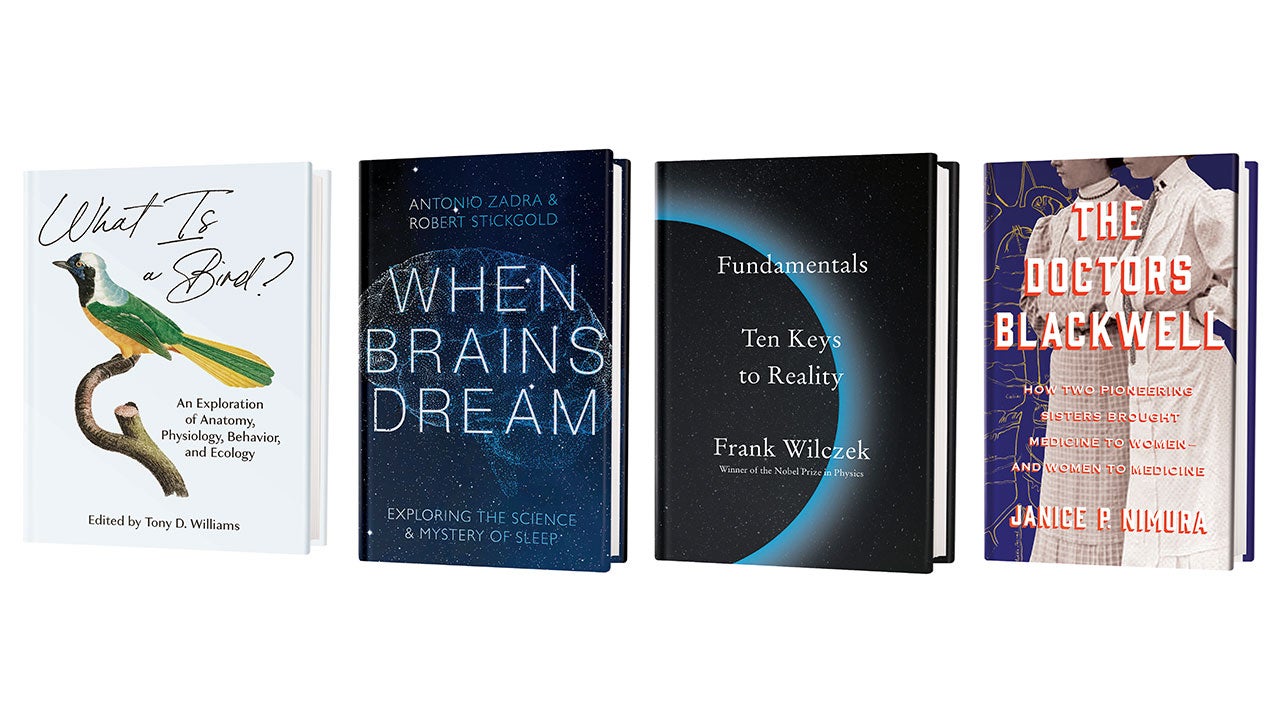What Is a Bird? An Exploration of Anatomy, Physiology, Behavior, and Ecology
edited by Tony D. Williams
Princeton University, 2020 ($35)
Many housebound quarantiners have recently discovered a new—or renewed—interest in birds. Through windows overlooking gardens or fire escapes and in small parks or dense woods, birds occupy nearly every habitat on earth and are our constant, if sometimes unnoticed, companions. This welcoming compendium is part coffee-table book and part deep dive into the science of ornithology—the team of biologist-authors, edited by biology professor Williams, elucidates all things bird: from their evolution and anatomy to their social and migration patterns. Even casual bird-watchers will be drawn into the fascinating mechanisms of feather coloring of house finches (Haemorhous mexicanus) or the science that gives the bill of a helmet vanga (Euryceros prevostii) its unmistakable blue.
When Brains Dream: Exploring the Science and Mystery of Sleep
by Antonio Zadra and Robert Stickgold
W. W. Norton, 2021 ($27.95)
Dreams feel significant while they are happening, but do they have any scientific relevance? Sleep researchers Zadra and Stickgold propose their own framework for dreams' purpose in the brain, detailing the history of dream research and lessons learned. Dreaming acts as a memory-processing mechanism, they write, exploring images and thoughts weakly associated with moments from the previous day. Scientists have used compelling methods to probe dreams' inner workings: for example, dreamers can signal via eye movements to observers while their dreams are in progress to help researchers measure the length of dream actions. The book wields dreamy anecdotes and complex neuroscience to try to grasp the importance of these phantasms. —Sarah Lewin Frasier
Fundamentals: Ten Keys to Reality
by Frank Wilczek
Penguin Press, 2021 ($26)
To see the world through the lens of physics we must be “born again,” physicist Wilczek writes—we have to lose our preconceptions and approach the universe with the same open-minded curiosity and acceptance as a baby first learning about her surroundings. In this overview of modern physics, Wilczek describes the known and the unknown—what scientists have managed to learn about reality and what they still struggle to explain. In 10 chapters covering space, time, matter, energy and other basic concepts, he tells the stories behind the major players and turning points in the development of physical knowledge. The result is a lucid and riveting narrative of the fundamentals—what Wilczek calls “the central messages of modern physics,” which are not just facts about how the world works but also “the style of thought that allowed us to discover them.” —Clara Moskowitz
The Doctors Blackwell: How Two Pioneering Sisters Brought Medicine to Women—and Women to Medicine
by Janice P. Nimura
W. W. Norton, 2021 ($27.95)
In the mid-19th century the view of most male physicians was that women did not have the intellect or emotional fortitude to be their colleagues. Despite this skepticism, Elizabeth Blackwell was accepted by the Geneva Medical College in New York State and in 1849 became the first woman in America to obtain a medical degree. Writer Nimura uses an extensive collection of journal entries and letters to trace Blackwell's trailblazing journey through medical school and her further training in the U.S. and abroad. Her younger sister, Emily, followed in her footsteps and became a doctor in 1854. In 1857 the sisters established the New York Infirmary for Indigent Women and Children—the first hospital staffed by women and intended to offer both care for women and training for future women doctors.



